Most businesses are reliant on third party vendors in some shape or form. External firms provide organisations of all sizes with the products and services they require to function from moment to moment.
This arrangement is attractive for all sorts of reasons but brings risks along with it. As a result, it’s necessary to evaluate vendors and understand the nature and scope of the potential issues involved in partnering with them.
Various issues can crop up when vendors become crucial to business continuity. For instance, if you hand sensitive data over to a third-party software provider, you are reliant on their security meeting minimum requirements. If they fall short of the standards your company must meet, then regulatory repercussions are inevitable. Likewise, if a vendor falls foul of financial mismanagement, the service disruption that follows will leave your firm in a vulnerable position.
Vendor risk management is part of a structured approach to proactively identify and mitigate risks. It shores up operational resilience and reduces compliance concerns. Organizations in heavily regulated industries like tech, healthcare, and financial services stand to benefit most from its application.
Most importantly, this process needn’t be time-consuming or resource intensive. Using a vendor risk assessment template formalizes and catalyses each step. With a comprehensive vendor risk assessment system in place, no organization is left exposed to uncertainty around issues of business continuity, reputation, or stakeholder trust.
“Being proactive and placing security and resilience at the start of any development means that we can confidently explore ideas and push boundaries, safe in the knowledge that we are managing any risk associated with our software supply chain responsibly”.
Andy Ellis
Head of NatWest Ventures

A regimented approach to 3rd party vendor risk assessment has a host of benefits. First and foremost, it makes risks known so they can be strategically and proactively dealt with. Sensitive information gets protected, business continuity is assured, and compliance with relevant regulations is undiminished.
A software vendor risk assessment starts with understanding what’s at stake. Software escrow involves reviewing your software portfolio and assigning risk scores based on business criticality, vendor stability, and ability to meet obligations. It also allows you to factor in touchpoints like data security, compliance requirements, and how frequently the software is updated.
Vendor lock-in is a major operational risk, especially when there's no viable alternative to a critical supplier. A software escrow agreement prevents vendor lock-in by securing access to critical software assets. If a vendor fails, discontinues support, or changes terms, you have what you need to access, maintain or migrate the application to a new vendor.
When conducting a vendor risk assessment, verifying compliance with relevant industry regulations such as PRA, FFIEC, DORA and APRA is essential. A software escrow agreement, combined with escrow verification, provides evidence of a documented and tested business continuity plan. This can then be used during audits to demonstrate compliance with third-party risk management and operational resilience requirements.
Every vendor risk assessment should evaluate what happens if a critical software supplier fails. A software escrow agreement and escrow verification exercise strengthens business continuity plans by providing the legal right to access the source code, data, and documentation that details how critical software can be rebuilt, updated and maintained. Whether you maintain the software in-house or transition to a new provider, escrow gives you confidence that operations can continue even if your vendor cannot.
Monitoring vendor performance is a core part of any vendor risk assessment. If a provider fails to meet SLAs or uphold software maintenance commitments, a software escrow agreement ensures you have the rights and resources to maintain or update the application, protecting continuity without relying on the vendor.
As part of a vendor risk assessment, it’s essential to evaluate third-party security protocols, data protection practices, and incident response readiness. Our Static Application Security Testing (SAST) service supports this process by detecting security vulnerabilities in the application’s source code before deployment. Identifies vulnerabilities can be remediated, promoting more secure software delivery and better-informed risk decisions.
Join 14,000 customers in 135+ countries

















If your software vendor fails, you’re not stuck. A Software Escrow Agreement addresses key risks identified during a vendor risk assessment by ensuring access to the source code, data, and materials behind critical applications. Learn more.

Tackle continuity and compliance concerns uncovered in a vendor risk assessment with Software Escrow Verification. It allows you to test, and document continuity plans for critical software, and enables recovery following disruption. Learn more.

When software is cloud-hosted, continuity depends on the vendor’s stability. SaaS Escrow mitigates this risk by securing the code, data, credentials, configurations, and environments necessary to restore the application if the provider fails. Learn more.
Book a call to learn how Software Escrow can mitigate the risks associated with software vendors.